Mac
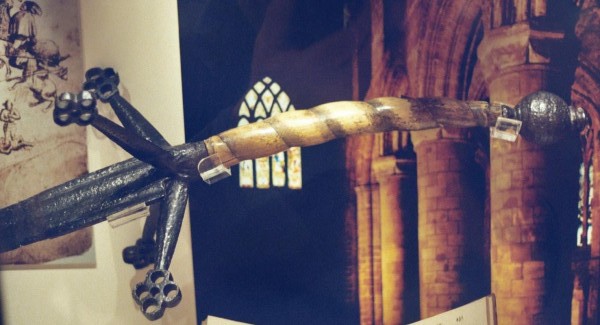

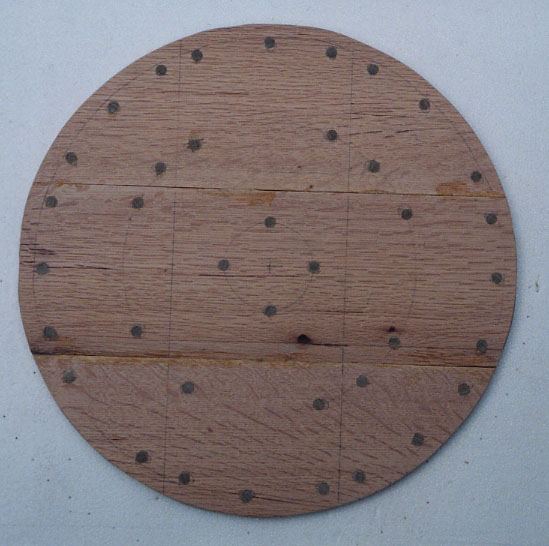
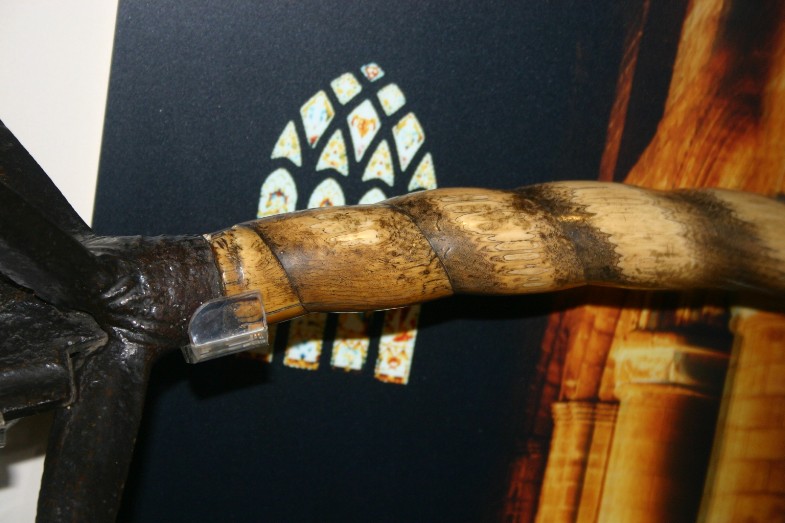
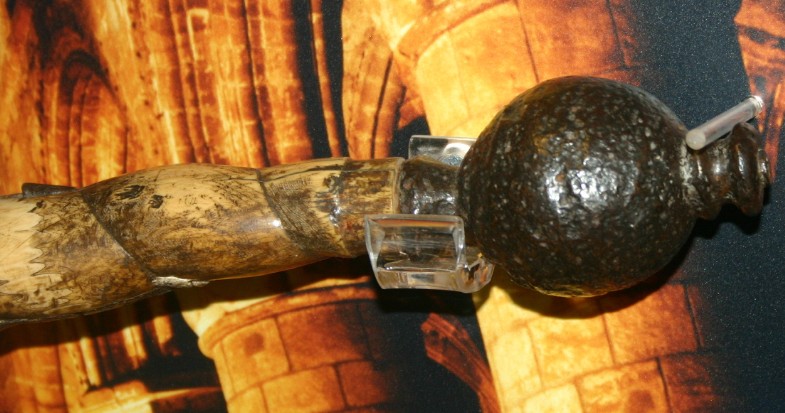
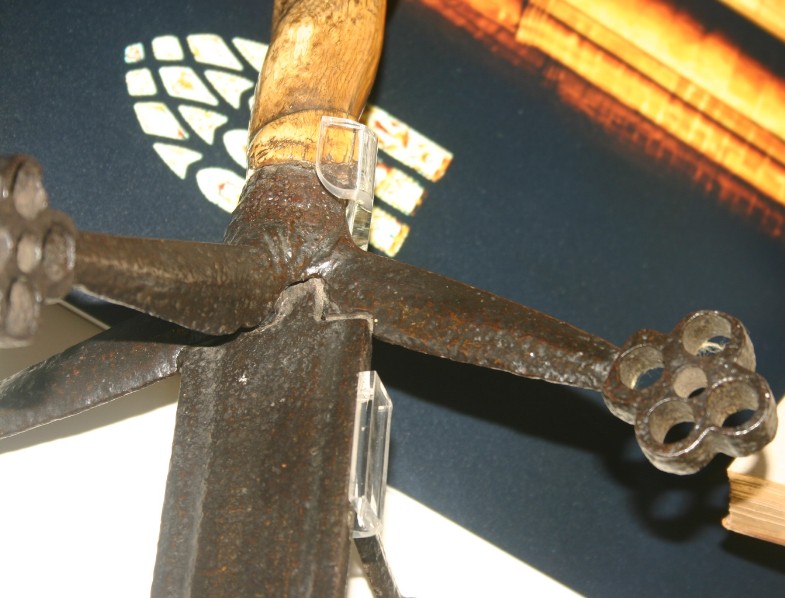
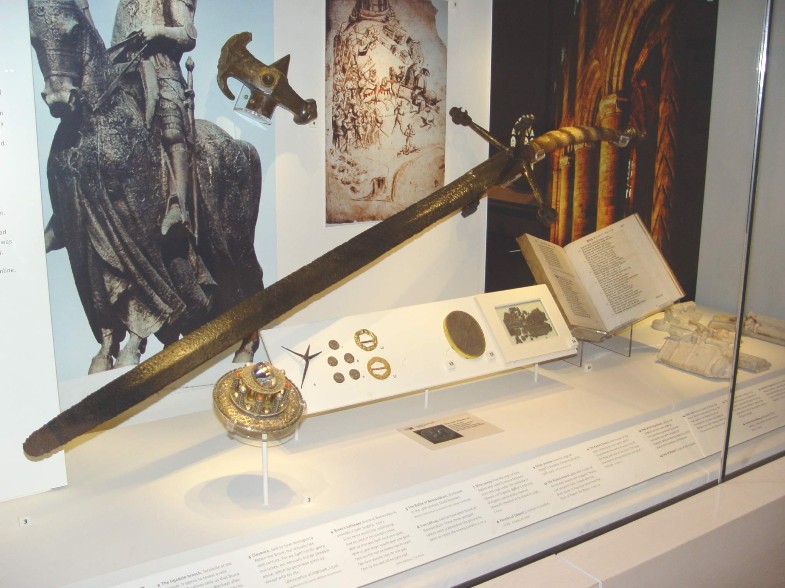
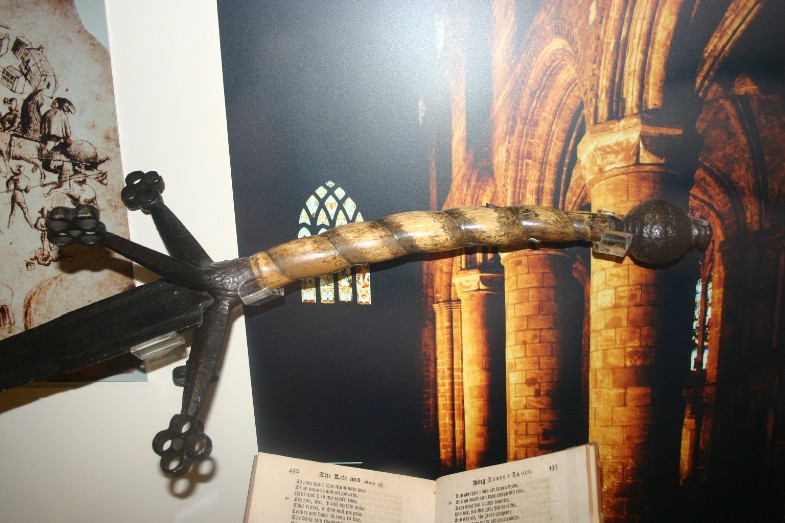
| Larry Davis wrote: |
|
If you construct one in the original fashion, you will find that the targe body starts to warp within the day! Its best to let it stand and finish warping for a week before laying out for straps and leather. Larry. |
| Merv Cannon wrote: |
| Hi Again......... I just fornd the book "Scottish Weapons and Fortifications" 1100 - 1800 by David Caldwell. @ Amazon but its listed twice. The first listing is "used from $50 for hardcover, 1980." The second listing is for " new and used hardcover, 1981- from $189.24 " !!
Can someone guide me as to whats happening between 1980 and 1981 ? Second year printing must be a whole lot thicker !? :!: |
| Richard Fay wrote: |
| Hello all!
Mac, Thanks again for the wonderful pictures of that oddball sword! I wondered if the grip could be from a narwhal tusk (you know, "unicorn horn"), but they might be straighter than that. Does anyone know if narwhal tusks would have such a curve? Of course, maybe it's another material carved to look like that. I also wondered, could the tang be bent to take the shape of the grip material? Maybe the buyer specifically wanted a certain grip material, and the only piece to be had was bent. I find it hard to believe that a bend like that would occur after construction without the grip cracking or breaking! Thanks again, Mac! I know this is getting off topic from targes, but it's still interesting just the same! Oh, I just found a drawing of the Hawthornden sword, said to have been wielded by Robert the Bruce, in The Battle of Bannockburn 1314 by Aryeh Nusbacher. I believe it's the same sword (spiral grip, four-armed cross). The book also has a drawing of the same axe head that's displayed with the sword. The caption states that the handle is made from narwhal tusk. (I read this after I typed in the first part, really I did!) :) Stay safe! |
| Johan S. Moen wrote: | ||
The word "close" might be the key here. I agree that the spike on the targe will not be of much use when on sword-length distance from your opponent, but if you start doing close play, grappling, etc, I can not see why it would be hard to use the spike against an opponent. A largish buckler can be used for armlocks without trouble, and though the targe is held in a more confined manner, it should be possible to use both the edge and the spike for punching. Johan Schubert Moen |
| Walter Stockwell wrote: | ||||
To follow on this... why hold a dirk in the targe hand if one is unable to use it (either because the targe is too heavy, or no reach.) If you can hurt someone with a dirk in your hand, you can probably hurt them with a spike on your targe. |
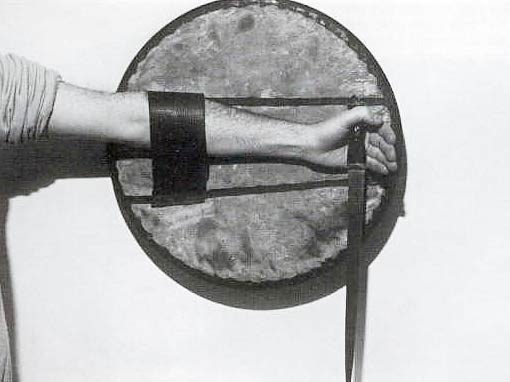
| GG Osborne wrote: |
| Let's go back to the spike issue again: Does anyone have a feel for how long these spikes were? or what percentage of targes actually had a spike? Is this just another disservice to historical Scotdom by David Morier? Were they round, or square? Screwed in or fixed in place? If one were to make a reproduction for a targe, what would it look like? Inquiring minds want to know! George |